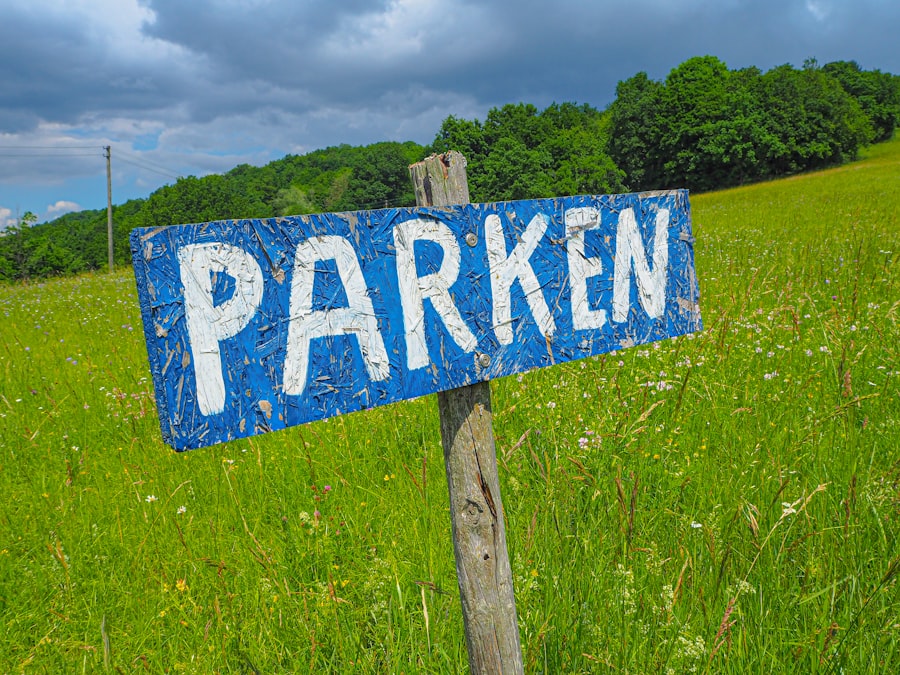In our fast-paced world, the act of pausing can feel like a luxury we cannot afford. Yet, it is in these moments of stillness that we often find clarity and connection to ourselves. Pausing allows us to step back from the whirlwind of thoughts and emotions that can overwhelm us, creating a space where we can breathe and reflect.
It is an invitation to slow down, to listen to our bodies, and to honor our feelings. When you pause, you give yourself permission to be present, to acknowledge what is happening within and around you. Taking a moment to pause can be transformative.
It is a gentle reminder that you are not just a collection of tasks or responsibilities; you are a whole person with needs, desires, and emotions. In this space of stillness, you can cultivate awareness of your inner landscape. You may notice tension in your body, racing thoughts, or a sense of fatigue.
By recognizing these signals, you can begin to respond to them with compassion rather than judgment. Pausing is not merely about stopping; it is about reconnecting with yourself and nurturing your well-being.
Key Takeaways
- Pausing is important for mental and physical well-being, allowing time for reflection and relaxation.
- Somatic pause involves tuning into the body’s sensations and using them as a guide for pausing and resetting the nervous system.
- Pausing helps reset the nervous system, reducing stress and promoting a sense of calm and emotional safety.
- The impact of pausing on mental health is significant, as it can reduce anxiety, improve mood, and enhance overall well-being.
- Pausing can improve decision making by allowing for a moment of clarity and reducing impulsivity.
Understanding Somatic Pause
A somatic pause goes beyond the physical act of stopping; it involves tuning into your body and its sensations. The term “somatic” refers to the body as a source of wisdom and insight. When you engage in a somatic pause, you invite yourself to explore how your body feels in the present moment.
This practice encourages you to notice sensations such as tightness, warmth, or even lightness, allowing you to connect with your physical self on a deeper level. To engage in a somatic pause, find a comfortable position—whether sitting or standing—and take a few deep breaths. As you inhale, invite in a sense of calm; as you exhale, release any tension or stress.
Allow your awareness to drift through your body, noticing areas that may feel heavy or constricted. This practice can help you cultivate a greater understanding of how your emotions manifest physically. By acknowledging these sensations without judgment, you create a pathway for healing and self-acceptance.
The Nervous System Reset

Our nervous system plays a crucial role in how we respond to stress and trauma. When we experience overwhelming emotions or situations, our nervous system can become dysregulated, leading to feelings of anxiety, panic, or disconnection. Pausing serves as a powerful tool for resetting this system.
By taking intentional breaks throughout your day, you can help your nervous system return to a state of balance. During a pause, focus on your breath and allow yourself to enter a state of relaxation. This can activate the parasympathetic nervous system, which is responsible for rest and digestion.
As you breathe deeply and slowly, visualize your body releasing tension and stress with each exhale. This simple act can help shift your nervous system from a state of fight-or-flight to one of calm and safety. Over time, these pauses can become a vital part of your self-care routine, allowing you to navigate life’s challenges with greater ease.
Creating Emotional Safety through Pausing
Emotional safety is essential for healing and growth. When you pause, you create a sanctuary for yourself—a space where you can explore your feelings without fear of judgment or pressure. This emotional safety allows you to process difficult emotions and experiences at your own pace.
It is an opportunity to acknowledge what you are feeling and to validate those feelings as part of your human experience. To cultivate emotional safety during your pauses, consider setting an intention for your practice.
As you pause, remind yourself that it is okay to feel whatever arises—whether it be sadness, anger, or joy. By creating this safe space within yourself, you empower yourself to face challenging emotions with courage and resilience. Remember that pausing is not about avoiding discomfort; it is about embracing it with kindness.
The Impact of Pausing on Mental Health
The mental health benefits of pausing are profound. In moments of overwhelm or stress, taking time to pause can help reduce anxiety and improve overall well-being. When you allow yourself to step back from the chaos of daily life, you create an opportunity for reflection and self-discovery.
This practice can lead to greater emotional regulation and resilience over time. Research has shown that mindfulness practices, which often include pausing, can significantly reduce symptoms of anxiety and depression. By incorporating regular pauses into your routine, you may find that you are better equipped to handle life’s challenges.
You may also notice an increase in feelings of gratitude and contentment as you learn to appreciate the present moment more fully. Pausing becomes not just a tool for managing stress but a pathway toward cultivating joy and fulfillment in your life.
How Pausing Can Improve Decision Making

When faced with important decisions, it can be tempting to rush into action or seek immediate solutions. However, pausing before making choices allows for deeper reflection and clarity. In these moments of stillness, you can connect with your intuition and assess what truly aligns with your values and desires.
This practice encourages thoughtful decision-making rather than reactive responses. To harness the power of pausing in decision-making, consider implementing a simple practice: when faced with a choice, take a moment to breathe deeply and reflect on how each option feels in your body. Notice any sensations that arise—do certain choices feel expansive or constrictive?
This somatic awareness can guide you toward decisions that resonate with your authentic self. By pausing before acting, you empower yourself to make choices that support your well-being and align with your true path.
The Connection Between Pausing and Physical Health
The mind-body connection is a powerful aspect of our overall health. When we experience stress or emotional turmoil, it often manifests physically—through tension in our muscles, digestive issues, or fatigue. Pausing provides an opportunity to reconnect with our bodies and address these physical manifestations of stress.
By taking time to listen to what your body needs, you can promote healing and well-being. Incorporating pauses into your daily routine can lead to improved physical health outcomes as well. For instance, regular breaks throughout the day can help reduce muscle tension and improve posture by allowing you to stretch and move mindfully.
Additionally, these pauses can enhance your awareness of hunger cues and promote healthier eating habits by encouraging mindful eating practices. As you prioritize pausing for both mental and physical health, you’ll likely notice an overall sense of vitality and balance in your life.
Using Pausing as a Tool for Stress Management
Stress is an inevitable part of life; however, how we respond to it can make all the difference in our well-being. Pausing serves as an effective tool for managing stress by providing moments of respite amidst the chaos. When stress levels rise, taking intentional breaks allows you to step back from the situation and regain perspective.
During these pauses, consider engaging in grounding techniques such as deep breathing or gentle movement. These practices can help release pent-up energy and tension while promoting relaxation. You might also find it helpful to journal during these moments—writing down your thoughts and feelings can provide clarity and insight into what is causing your stress.
By incorporating pausing into your stress management toolkit, you empower yourself to navigate challenges with greater ease and resilience.
Incorporating Pausing into Daily Life
Integrating pauses into your daily life doesn’t have to be complicated or time-consuming; small moments throughout the day can make a significant impact on your well-being. Start by identifying natural breaks in your routine—perhaps during transitions between tasks or while waiting for an appointment. Use these moments as opportunities to pause and reconnect with yourself.
You might set reminders on your phone or place sticky notes in visible areas as gentle prompts to pause throughout the day. When the reminder comes up, take a few deep breaths or stretch for a moment before moving on to the next task. Over time, these small pauses will become habitual, creating a rhythm of mindfulness that supports your emotional regulation and overall well-being.
The Role of Pausing in Building Resilience
Resilience is the ability to bounce back from adversity; it is cultivated through self-awareness and self-care practices like pausing. When faced with challenges or setbacks, taking time to pause allows you to process what has happened without becoming overwhelmed by emotions or stressors. This practice fosters resilience by helping you develop coping strategies that support your growth.
As you learn to pause during difficult moments, you’ll find that you become more adept at navigating life’s ups and downs with grace and strength. You may also discover that these pauses provide opportunities for reflection—allowing you to identify lessons learned from challenging experiences that contribute to your personal growth journey.
Practicing Mindfulness through Pausing
Mindfulness is about being fully present in the moment without judgment—a practice that aligns beautifully with the act of pausing. When you pause mindfully, you create space for awareness of your thoughts, feelings, and bodily sensations without rushing toward conclusions or solutions. This practice invites curiosity into your experience rather than resistance.
To cultivate mindfulness through pausing, consider setting aside dedicated time each day for this practice—perhaps during morning coffee or before bed. During this time, focus on your breath and observe any thoughts or feelings that arise without trying to change them. Allow yourself simply to be present with whatever comes up; this gentle acceptance fosters a deeper connection with yourself and enhances overall well-being.
In conclusion, pausing is not just an act of stopping; it is an invitation to reconnect with yourself on multiple levels—emotionally, physically, mentally, and spiritually. By embracing the power of pausing in your life, you create opportunities for healing, growth, and resilience that will serve you well on your journey toward wholeness and well-being.
If you are interested in exploring the benefits of therapy as a way to support your mental health, you may find the article Mental Health Mantra: Support Comes in Different Ways discusses the importance of seeking support in various forms to maintain your mental well-being.
FAQs
What is the power of pausing?
The power of pausing refers to the benefits of taking a break or slowing down in order to allow your body and mind to rest, recharge, and catch up with the demands of daily life.
How does pausing benefit the body?
Pausing allows the body to reduce stress, lower blood pressure, improve digestion, and boost the immune system. It also helps to prevent burnout and reduce the risk of chronic health conditions.
What are the mental benefits of pausing?
Pausing can improve mental clarity, enhance focus and concentration, reduce anxiety and depression, and promote overall emotional well-being. It also allows for better decision-making and problem-solving.
How can pausing improve productivity?
Taking regular breaks and pausing throughout the day can actually improve productivity by preventing mental fatigue, increasing creativity, and allowing for better time management and prioritization of tasks.
What are some ways to incorporate pausing into daily life?
Incorporating pausing into daily life can be as simple as taking short breaks throughout the day, practicing mindfulness or meditation, engaging in deep breathing exercises, or scheduling regular relaxation activities such as yoga or nature walks.


